Einser Hall of Fame
L-P
Since the founding of the Will Eisner Comic Industry Awards (and their previous incarnation, the Kirby Awards), the following individuals have been inducted into the Hall of Fame.

Oskar Lebeck
1903–1966
Oskar Lebeck was an illustrator, writer, and editor (mostly of children’s literature) who is best known for his role in establishing Dell Comics during the 1930s and 1940s. Notably, he hired Walt Kelly, who became one of the star creators of the line, best known for originating Pogo while there. Lebeck also selected John Stanley to bring panel cartoon character Little Lulu to comic books. Comic book historian Michael Barrier commented that Dell’s fairy tale, nursery rhyme, and similarly themed titles “represented an effort by Lebeck, who had written and drawn children’s books in the 1930s, to bring to comic books some of the qualities of traditional children’s books, especially through rich and rather old-fashioned illustrations.”
Inducted 2024

Jim Lee
1964–
DC’s president, publisher, and chief creative officer entered the industry in 1987 as an artist for Marvel, drawing such titles as Alpha Flight and The Punisher War Journal and gaining popularity on The Uncanny X-Men—on which, working with Chris Claremont, he co-created the character Gambit. That led to a 1991 Lee-Claremont spinoff—X-Men—with its first issue remaining the bestselling comic book of all time. In 1992, Lee joined other creators to found Image, for which his WildStorm studio provided releases including WildC.A.T.s and Gen¹³. In 1998 he took WildStorm to DC, where he drew comics including Batman and Superman. In 2005, he co-created All Star Batman & Robin, the Boy Wonder with Frank Miller. In 2010, Lee and Dan DiDio became DC co-publishers; in 2020, Lee became the sole DC publisher. He was one of the driving forces behind the 2011 DC relaunch and made new costume designs for relaunched series and drew Justice League. In 2018, he became DC Chief Creative Officer. He received an Inkpot Award in 1992.
Inducted 2024

Stan Lee
1922–2018
After having been an editor at Timely in the 1940s and 1950s, in the 1960s Stan Lee co-created all the Silver Age Marvel characters, wrote all the books, and still had time to commune with readers (“Face front, true believers!”) via “Stan’s Soapbox.” Following his retirement from Marvel in the 1990s, Lee remained a public figurehead for the company. He frequently made cameo appearances in films and TV shows based on Marvel properties. He continued independent creative ventures until his death at age 95.
Inducted 1994

Paul Levitz
1956–
Paul Levitz began his career as a comics fan, publishing The Comic Reader. He started at DC in 1973 as an assistant editor (to Joe Orlando) and 1978 became editor of the Batman titles. He was an executive at DC for 30 years, ending as president and publisher. As a comics writer, he is best known for Legion of Super-Heroes. Most recently, Levitz has worked as a historian (75 Years of DC Comics: The Art of Modern Myth-Making, TASCHEN, 2010) and teacher (including the American Graphic Novel at Columbia). His most recent book is Will Eisner: Champion of the Graphic Novel (Abrams ComicArts, 2015).
Inducted 2019

Harry Lucey
1913–1984
In the early 1940s Harry Lucey worked in a studio with Bob Montana, and legend has it that he helped Montana create the original Archie gang for MLJ’s Pep comics (even contributing Betty’s name). After stints in World War II and as an advertising illustrator, Lucey returned to MLJ in 1949, where he drew Archie comics for the next two decades. The dynamic and expressive style he developed in his Archie stories was highly influential on subsequent artists, most prominently Jaime Hernandez.
Inducted 2012
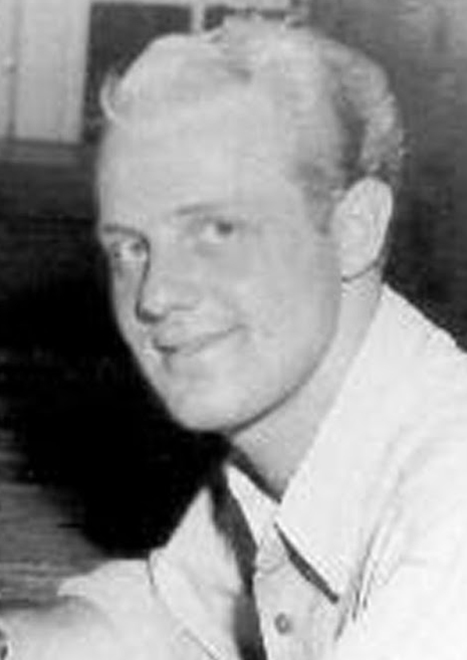
Joe Maneely
1926–1958
Between the late 1940s and late 1950s, Maneely was a frequent contributor to Atlas Comics (which became Marvel Comics), and one of the key collaborators with Stan Lee. He is best remembered as the co-creator and main artist of such titles as Ringo Kid, Black Knight, and Yellow Claw. This latter series introduced both the master villain Yellow Claw and the heroic secret agent Jimmy Woo, who was later featured in several other Marvel comic books. A tragic train accident ended his career at age 32.
Inducted 2025
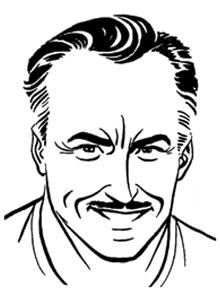
Russ Manning
1929–1981
Russ Manning was a giant in both the comic strip and comic book worlds. He drew the Tarzan comic for Dell in the 1950s and 1960s, then went on to draw the syndicated Tarzan newspaper strip from 1969 to 1972 and the Sunday strip through 1979. He created the comic book series Magnus, Robot Fighter for Gold Key in 1963 and continued to write and draw it through 1968. He wrote and drew the syndicated Star Wars strip in 1979–1980.
Inducted 2006

William Moulton Marston
1893–1947
In 1940, psychologist William Marston was hired by Max Gaines as a consultant for National Comics (DC). Marston pointed out that DC had no females among its flagship heroes, and he (with his wife Elizabeth) proceeded to create Wonder Woman, who made her debut in All Star Comics #8 in December 1941. Wonder Woman was a hit and soon had her own book, which Martson (writing as “Charles Moulton”) wrote up until his death in 1947.
Inducted 2006

Don Martin
1931–2000
“MAD’s maddest artist” Don Martin delighted decades of readers with his goofy strips featuring oddball characters and demented sound effects. Who could forget Fonebone or Fester Bestertester? And what kind of imaginative mind did it take to add “Glabadap,” “Schloot,” “Sklishk,” “Sploydoing,” and “Thwizzik” to the sound effects lexicon? There could only be one Don Martin.
Inducted 2004

Frans Masereel
1889–1972
Frans Masereel is one of the most famous Flemish woodcut artists of his time. Like Lynd Ward, Masereel wrote “novels without words” and can be seen as a precursor to current graphic novelists. His first “graphic novel” was De Stad (1925), in which he described life in the city in 100 engravings. Other books are GeschichteOhne Worte and De Idee, about an idea that’s being haunted by the police and justice. It became very popular among anti-Nazis. Masereel settled in France after World War II and died in 1972.
Inducted 2024
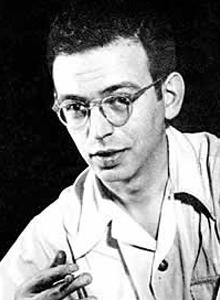
Sheldon Mayer
1917–1991
Sheldon Mayer was at DC from its very beginning, having played a role in convincing Harry Donenfeld to feature Superman in the company’s new title, Action Comics. He was not only one of the most revered editors in the history of comics but a cartoonist in his own right, having created Scribbly and the much-beloved Sugar and Spike.
Inducted 2000

David Mazzucchelli
1960–
David Mazzucchelli started working in comics in the early 1980s, first at Marvel Comics where he became the regular artist on Daredevil. He worked with writer Denny O’Neil and culminated his work on this title with the Daredevil: Born Again story arc, written by Frank Miller. He collaborated with Miller again on Batman: Year One, considered one of the best Batman stories ever produced. Mazzucchelli moved on to focus on more personal projects, including his own independent anthology, Rubber Blanket, and an adaptation of Paul Auster’s City of Glass. In 2009, Pantheon Books published Mazzucchelli’s graphic novel Asterios Polyp, which won the Los Angeles Times Book Prize and three Eisner Awards.
Inducted 2022
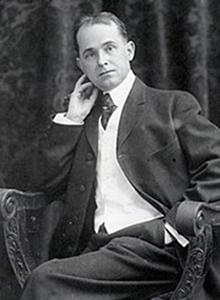
Winsor McCay
1867–1934
Winsor McCay‘s Dream of the Rarebit Fiend and Little Nemo set unparalleled standards for fantasy artwork on the Sunday comics page early in the 20th century. McCay was also a pioneer in animation with his “Gertie the Dinosaur” short film.
Inducted 1998
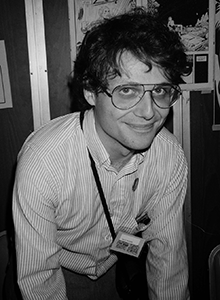
Scott McCloud
1960–
Scott McCloud came on the comics scene with his series Zot!, published by Eclipse Comics from 1984 to 1990. Subsequent comics included Destroy!! and The New Adventures of Abraham Lincoln. He is best known as the creator of the award-winning Understanding Comics, his 1994 treatise on the comics medium done in graphic novel form. He produced two follow-up books: Reinventing Comics (2000) and Making Comics (2006). His graphic novel The Sculptor was released in 2015. McCloud was furthermore one of the early promoters of webcomics and the principal author of the 1988 Creator’s Bill of Rights. He is also the originator of 24-Hour Comics Day, an annual event in which cartoonists finished a complete 24-page comic book in 24 hours.
Inducted 2021

Don McGregor
1945–
Don McGregor began his comics writing career in 1969, writing horror stories for James Warren’s Creepy, Eerie, and Vampirella. After working as an editor on several of Marvel Comics’ B&W line of comic/magazines, in 1973 he was assigned to write the Black Panther in Marvel’s Jungle Action comics. The “Panther’s Rage” series was the first mainstream comic to have an essentially all-black cast of characters. Don also wrote Killraven, Luke Cage, Power Man, and Morbius, The Living Vampire in that time period. In the middle of the 1970s he created the historically important graphic novel Sabre, with art by Billy Graham. During the early 1980s, Don’s works included Detectives Inc. for Eclipse, and he worked with Gene Colan on Ragamuffins (Eclipse), Nathaniel Dusk (DC), and Panther’s Quest (Marvel). His 1990s writing included Zorro and Lady Rawhide for Topps.
Inducted 2024

Mort Meskin
1916–1995
Mort Meskin is best known for his 1940s work at DC, drawing such series as “Vigilante,” “Wildcat,” “Starman,” and “Johnny Quick.” Together with Jerry Robinson he created “Atoman” and “Golden Lad” for Spark Publications; drew “The Fighting Yank” and “Black Terror” for Better Publications/Standard; and did several horror stories for Atlas (Marvel). Through the studio of Jack Kirby and Joe Simon, he produced Boys’ Ranch for Harvey and Black Magic for Crestwood Publications, and he is considered a major influence on Kirby and many other artists.
Inducted 2013
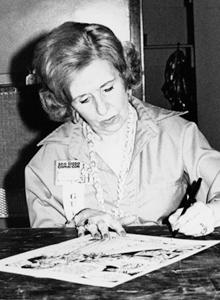
Dale Messick
1906–2005
Dale Messick‘s landmark comic strip Brenda Starr debuted in 1940, and she produced it herself for 43 years. She treated readers to stories of adventure and intrigue that also included glamour, fashion, and romance.
Inducted 2001

Mike Mignola
1960–2024
In 1983, Mignola was a Marvel inker on Daredevil and Power Man and Iron Fist, later becoming the penciler on such titles as The Incredible Hulk, Alpha Flight, and the Rocket Raccoon limited series. In 1987, he began working for DC, too, and drew World of Krypton and ThePhantom Stranger limited series. With writer Brian Augustyn he produced the Gotham by Gaslight one-shot in 1989. Mignola is best known for creating Hellboy for Dark Horse Comics in 1994, kicking off a shared universe of titles including B.P.R.D., Abe Sapien, and Lobster Johnson. His other paranormal-themed titles for Dark Horse include Baltimore, Joe Golem, and The Amazing Screw-On Head. He received an Inkpot Award in 2004.

Frank Miller
1957–
Frank Miller had drawn a few short comics stories for DC and Marvel before he got his first regular series, Daredevil, in 1979. In 1981 he took over writing and drawing the series, introducing such characters as Elektra and Bullseye. After drawing the classic Wolverine miniseries by Chris Claremont, he went over to DC, first producing his own Ronin miniseries, then going on to create such 1980s classics as Batman: The Dark Knight Returns, Batman: Year One (with David Mazzucchelli), Daredevil: Born Again (with Mazzucchelli), and Elektra: Assassin (with Bill Sienkiewicz), the latter two at Marvel. In the 1990s, he moved to Dark Horse, which published his Hard Boiled (with Geof Darrow), Big Guy and Rusty the Boy Robot (with Darrow), Give Me Liberty (with Dave Gibbons), Sin City, and 300. In this century he has been active as a film director (Sin City) along with doing such comics projects as Batman: The Dark Knight Strikes Again, All-Star Batman & Robin the Boy Wonder, and Holy Terror.
Inducted 2015
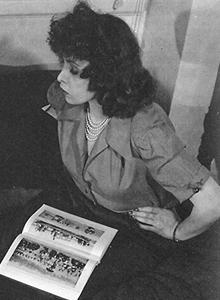
June Tarpé Mills
1918–1988
One of the few female artists working during the Golden Age of comics, June Tarpé Mills was the creator of Miss Fury, an action comic strip and comic book that first appeared in 1941. Miss Fury is credited as being the first female action hero created by a woman. The Miss Fury comic strip ran until 1951. Mills returned to comics briefly in 1971 with Our Love Story at Marvel Comics.
Inducted 2019
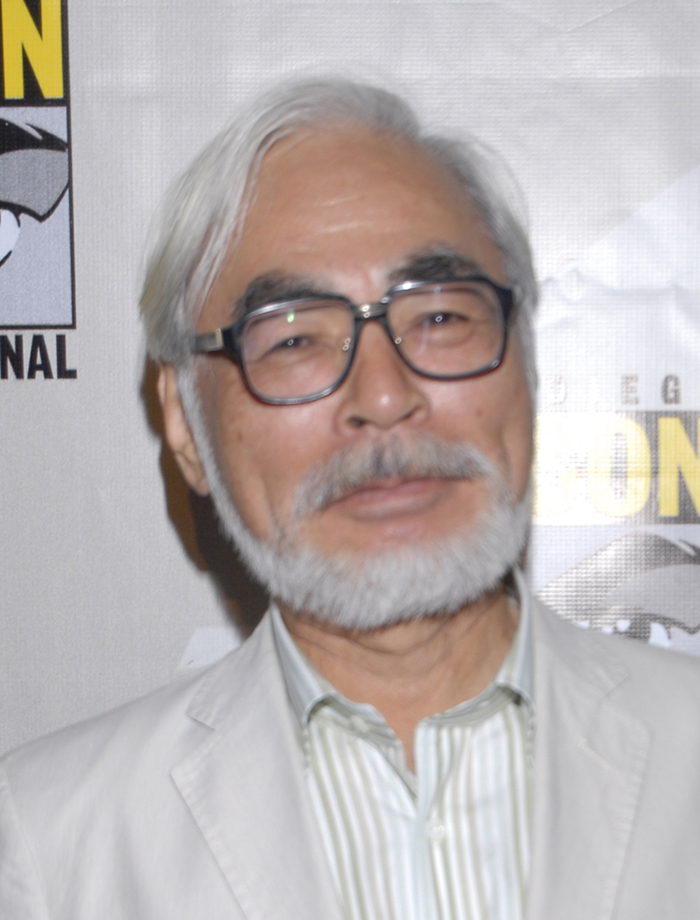
Hiyao Miyazaki
1941–
Although best known as Japan’s premier anime filmmaker, Hiyao Miyazaki is also celebrated as a manga artist worldwide. His major project, Nausicaä of the Valley of the Wind, was published intermittently from 1981 to 1994 and has been collected in multiple book volumes as well as being made into an animated feature. Other manga works include The Journey of Shuna, Hikōtei Jidai, and Kaze Tachinu (The Wind Rises).
Inducted 2014

Shigeru Mizuki
1922–2015
Shigeru Mizuki was one of Japan’s most respected artists. A creative prodigy, he lost an arm in World War II. After the war, Mizuki became one of the founders of manga. He invented the yokai genre with GeGeGe no Kitaro, his most famous character, who has been adapted for the screen several times, in anime, live-action films, and video games. In his hometown of Sakaiminato, one can find Shigeru Mizuki Road, a street decorated with bronze statues of his Kitaro characters.
Inducted 2025

Sheldon Moldoff
1920–2012
Sheldon Moldoff, Bob Kane’s first assistant on Batman, worked on the character off and on for 30 years. He is credited with co-creating Bat-Girl, Bat-Woman, Poison Ivy, Mr. Freeze, Bat-Mite, and Ace the Bat Hound, and he was the regular artist on the Golden Age Hawkman. He was also a prolific cover artist, with credits including the first Green Lantern cover (All-American #16).
Inducted 2014

Bob Montana
1920–1975
Cartoonist Bob Montana is famed for co-creating the character of Archie for MLJ Publications in 1941. He drew Archie’s first appearance in Pep and the first Archie comic books, and he was the writer/artist of the Archie newspaper strip from 1946 until his death in 1975.
Inducted 2010
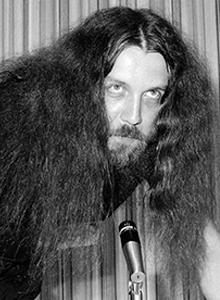
Alan Moore
1953–
British writer Alan Moore is best known as the creator of Watchmen, V for Vendetta, and From Hell. In the early 1980s he worked primarily for 2000AD (creating such series as Skiz, D.R. & Quinch, and The Ballad of Halo Jones), Marvel UK, and Warrior Publications. Moore hit the American comics scene in 1983 as the writer of DC’s Swamp Thing. The success of that title led to DC’s recruitment of more British writers, the founding of the Vertigo imprint, and Moore’s going on to create such enduring titles as Watchmen, Batman: The Killing Joke, V for Vendetta, The League of Extraordinary Gentlemen, and Lost Girls.
Inducted 2014
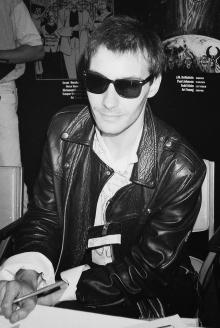
Grant Morrison
1960–
Writer Grant Morrison started his career in the early 1980s on various titles for British publishers, including Warrior, Dr. Who, and 2000 AD. His first U.S. hit was Animal Man for DC, followed by Doom Patrol. In 1989 DC published Morrison and Dave McKean’s highly successful graphic novel Arkham Asylum: A Serious House on Serious Earth. In the 1990s he produced several titles for DC’s Vertigo line, including The Invisibles, Sebastian O, Flex Mentallo, The Mystery Play, and Kill Your Boyfriend. Also at DC, he wrote JLA, The Flash, and DC One Million. In 2000–2001 Morrison moved over to Marvel, writing Marvel Boy, Fantastic Four 1234, and New X-Men. His DC works in recent decades include the graphic novel JLA: Earth 2, The Filth, W3, Seaguy, Seven Soldiers, Final Crisis, the award-winning All-Star Superman (with Frank Quitely), The Multiversity and the ongoing Batman title. Recent projects have included Happy! (Image, 2012), Nameless (Image, 2015), Klaus (BOOM! Studios), and Green Lantern (DC, 2019).
Inducted 2022

Win Mortimer
1919–1998
Canadian artist James Winslow Mortimer began working for DC Comics in 1945 and quickly became a cover artist for comics featuring Superman, Superboy, and Batman. He succeeded Wayne Boring on the Superman newspaper strip in 1949, leaving it in 1956 to create the adventure strip David Crane for the Prentice-Hall Syndicate. During the same period, Mortimer returned to DC and worked on a large variety of comics, ranging from humor titles such as Swing with Scooter to superhero features starring the Legion of Super-Heroes and Supergirl. He and writer Arnold Drake co-created Stanley and His Monster in 1965. By the early 1970s, he was freelancing for other publishers. At Marvel, he drew virtually every story in the TV tie-in children’s comic Spidey Super Stories (1974–1982) as well as the short-lived Night Nurse series. Mortimer’s work at Gold Key Comics included Boris Karloff Tales of Mystery, The Twilight Zone, and Battle of the Planets.
Inducted 2023

Françoise Mouly
1955–
Editor and publisher Françoise Mouly founded Raw Books and Graphics in 1978. With her husband, Art Spiegelman, she launched Raw magazine in 1980, which is perhaps best known for serializing Spiegelman’s award-winning Maus. A lavishly produced oversize anthology, Raw published work by Lynda Barry, Charles Burns, Kim Deitch, Ben Katchor, Richard McGuire, Lorenzo Mattotti, Gary Panter, Joost Swarte, Jacques Tardi, and Chris Ware, to name but a few. When Mouly became art director at The New Yorker in 1993, she brought a large number of cartoonists and artists to the periodical’s interiors and covers. In 2008 she launched TOON Books, an imprint devoted to books for young readers done by cartoonists.
Inducted 2021

Keiji Nakazawa
1939–2012
Keiji Nakazawa was born in Hiroshima and was in the city when it was destroyed by a nuclear weapon in 1945. He settled in Tokyo in 1961 to become a cartoonist. He produced his first manga for anthologies like Shonen Gaho, Shonen King, and Bokura. By 1966, Nakazawa began to express his memories of Hiroshima in his manga, starting with the fictional Kuroi Ame ni Utarete (Struck by Black Rain) and the autobiographical story Ore wa Mita (I Saw It). Nakazawa’s life work, Barefoot Gen (1972), was the first Japanese comic ever to be translated into Western languages. Barefoot Gen was adapted into two animated films and a live-action TV drama and has been translated into a dozen languages.
Inducted 2024

Thomas Nast
1840–1902
Editorial cartoonist Thomas Nast) is often considered to be the “Father of the American Cartoon.” He started out as an illustrator in 1856 while still a teenager and became a staff illustrator for Harper’s Weekly in 1860. His cartoons advocated the abolition of slavery, opposed racial segregation, and deplored the violence of the Ku Klux Klan. In the 1870s he used his cartoons to crusade against New York City’s political boss William Tweed, and he devised the Tammany tiger for this crusade. He popularized the elephant to symbolize the Republican Party and the donkey as the symbol for the Democratic Party, and he created the “modern” image of Santa Claus.
Inducted 2021
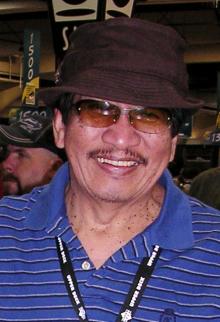
Alex Niño
1940–
Alex Niño was among the Filipino comics artists recruited for U.S. comic books by DC Comics editor Joe Orlando and publisher Carmine Infantino in 1971. Niño’s earliest DC work was drawing stories for House of Mystery, Weird War Tales, and other supernatural anthologies, as well as the jungle-adventure feature “Korak” in Tarzan. He moved to the U.S. in 1974. Over the next several decades, he drew all types of stories for DC, Marvel, Warren (Creepy, Eerie, Vampirella), Heavy Metal, Byron Preiss, Dark Horse Comics, and other publishers. Starting in the 1980s, Niño branched out into movies and video games, doing design work and concept art for Hanna-Barbera, Sega, and Walt Disney Pictures (Mulan and Atlantis).
Inducted 2022
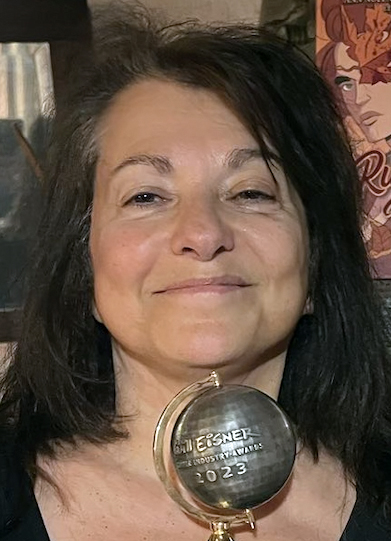
Ann Nocenti
1957–
Ann Nocenti is an American journalist, filmmaker, teacher, comic book writer, and editor. She is best known for her work at Marvel in the late 1980s, particularly the four-year stint as the editor of Uncanny X-Men and The New Mutants, as well as her run as a writer of Daredevil, illustrated primarily by John Romita, Jr. Ann has co-created such Marvel characters as Longshot, Mojo, Spiral, Blackheart, and Typhoid Mary. She also wrote Catwoman stories for DC Comics.
Inducted 2023
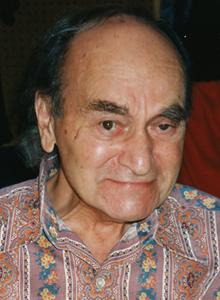
Martin Nodell
1915–2006
Marty Nodell co-created the Green Lantern in 1940 with writer Bill Finger. He drew Green Lantern in various titles until leaving DC in 1947 to work for Timely Comics. At Timely he drew Captain America, The Human Torch, and the Submariner, among others, until 1950 when he left the comics business for good.
Inducted 2011

Diane Noomin
1947–2022
Pioneering underground cartoonist Diane Noomin (married to cartoonist Bill Griffith) was best known for her character Didi Glitz and for editing the groundbreaking anthology series Twisted Sisters. Noomin’s comics career began in the early 1970s and included appearances in Wimmen’s Comix, Young Lust, Arcade, Titters, Weirdo, and many others. DiDi first appeared in a story called “Restless Reverie” in Short Order Comix #2 (1974). Most recently, Noomin edited the anthology Drawing Power: Women’s Stories of Sexual Violence, Harassment, and Survival (Abrams ComicArts, 2019), which was inspired by the global #MeToo Movement. The book won the 2020 Eisner Award for Best Anthology.
Inducted 2023

Bob Oksner
1916–2007
Bob Oksner was a Silver Age comic book artist best known for his distinctive work at DC on both adventure and humor titles. When DC began taking on the publication of comics based on TV sitcoms, Oksner drew such titles as Dean Martin & Jerry Lewis, The Adventures of Bob Hope, Dobie Gillis, and Sgt. Bilko. Over the years he also produced romance comics, as well as Angel and the Ape, Stanley and His Monster, Lois Lane, and Shazam.
Inducted 2025
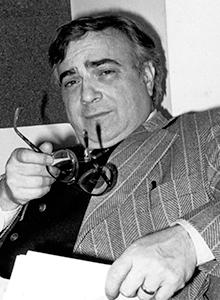
Joe Orlando
1927–1998
Joe Orlando started out as an assistant to Wally Wood in the late 1940s and became one of EC’s top sf/fantasy illustrators in the early 1950s. After a stint drawing for Classics Illustrated, he freelanced for MAD and Warren Publications in the 1960s. In 1968 he went on staff at DC, where he edited such titles as House of Mystery, The Witching Hour, Weird War Tales, and Plop! and went on to become vice president and coordinator of special projects. Orlando is credited with designing much of DC’s distinctive typography.
Inducted 2007

Jackie Ormes
1911–1985
Jackie Ormes was the first, and for a long time only, black female newspaper cartoonist. From 1937 to 1938 she wrote and drew Dixie in Harlem comics featuring Torchy Brown. After returning to her roots in journalism, she published Candy, a single-panel cartoon about a witty housemaid in 1945. Then she created Patty-Jo ’n’ Ginger, another single-panel cartoon about a pair of sisters, which ran for 11 years through 1956. Finally, from 1950 to 1954, Ormes revamped Torchy Brown into Torchy in Heartbeats, an 8-page color comic insert, including many paper dolls as was popular in the time.
Inducted 2018

Katsuhiro Otomo
1954–
In addition to Osamu Tezuka, Katsuhiro Otomo is the creator most responsible for popularizing anime and manga in the Western world. Akira, his landmark achievement, revitalized the anime and manga industry, building an entire new anime empire on the groundwork laid by Tezuka. Otomo’s other famous work is Domu, which began being serialized in 1980 and ran for two years. Next came Akira, which ran to over 2,000 pages serialized over eight years (1982–1990). The anime adaptation was released in 1988. Following the success of Akira, Otomo continued work in film as a director and screenwriter.
Inducted 2012
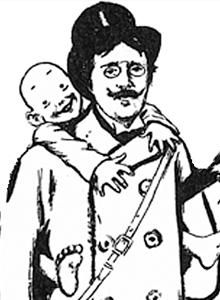
R. F. Outcault
1863–1928
Richard Felton Outcault was one of the pioneers of the American comic strip, having created The Yellow Kid (1894) and Buster Brown (1902), among other early titles.
Inducted 2011

Dennis O’Neil
1939–2020
In 1968 DC editor Julius Schwartz asked Dennis O’Neil to revamp Batman. O’Neil and artist Neal Adams took the character back to his roots and created the version of Batman that has been an inspiration for many of the Warner Bros. films and current comics. In 1970, Dennis again collaborated with Adams and Schwartz to produce the Green Lantern/Green Arrow series. Among his other lauded works for DC are The Shadow with Michael Kaluta and The Question with Denys Cowan.
Inducted 2014
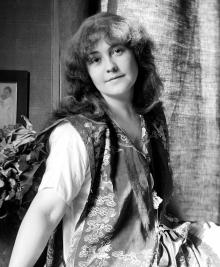
Rose O’Neill
1874–1944
Rose O’Neill was an American cartoonist and writer who, at a young age, became the best-known and highest-paid female commercial illustrator in the United States. A four-panel comic strip by O’Neill was featured in a September 19, 1896, issue of Truth magazine, making her the first American woman to publish a comic strip. She earned her international fame and fortune by creating the Kewpie, the most widely known cartoon character until Mickey Mouse. Her Kewpie cartoons, which made their debut in a 1909 issue of Ladies’ Home Journal, were made into bisque dolls in 1912 by J. D. Kestner, a German toy company. The dolls became immediately popular and are considered to be one of the first mass-marketed toys in the United States.
Inducted 2022

Harvey Pekar
1939–2010
The first issue of Harvey Pekar‘s American Splendor appeared in 1976. Between then and 1991 he self-published 16 issues, drawn by a variety of artists, most notably R. Crumb and Frank Stack. Subsequent issues were published by Dark Horse and Vertigo. His book with Joyce Brabner Our Cancer Year garnered numerous awards, and Harvey became somewhat of a celebrity by appearing on the Letterman show. In 2003 a film version of American Splendor brought Harvey back into the spotlight.
Inducted 2011
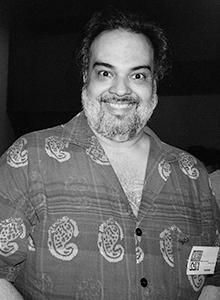
George Pérez
1954–2022
George Pérez started drawing comics at Marvel in 1974. After working on such titles as Fantastic Four, The Inhumans, and The Avengers, he developed a reputation as the artist who liked to draw group books. In addition to his Marvel stints, he is best known for his work on DC’s The New Teen Titans, Wonder Woman, and Crisis on Infinite Earths.
Inducted 2017

H. G. Peter
1880–1958
At age 61, Harry G. Peter began drawing Wonder Woman, collaborating with writer William Moulton Marston. Peter started with the Amazon’s first appearance in Sensation Comics in 1941 and continued drawing the feature for close to two decades. Wonder Woman #97, cover dated April 1958, was Peter’s last issue.
Inducted 2017

Lily Renée Phillips
1921–2022
Lily Renée Wilhelm Peters Phillips was the star artist for comics publisher Fiction House, where she worked from 1943 until 1948. She drew such strips as Werewolf Hunter, Jane Martin, Senorita Rio, and The Lost World. She was known for her striking covers and “good girl” art. She later drew Abbott & Costello Comics with her husband at the time, Eric Peters, and Borden’s Elsie the Cow comics. She left comics in the 1950s.
Inducted 2021
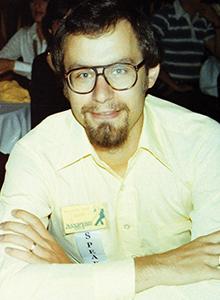
Richard Pini
1950–
Richard and Wendy Pini created the much-loved fantasy series Elfquest, widely regarded as the first manga-influenced graphic novel series with a high fantasy theme published in the U.S. The Pinis were among the first independent publishers of their own comics, founding Warp Graphics in 1978. Richard ran Warp full-time from 1981 until 2003. In 2018, Elfquest concluded its 40-year run with Dark Horse Comics. The series has millions of readers around the world and continues to gain new fans.
Inducted 2019
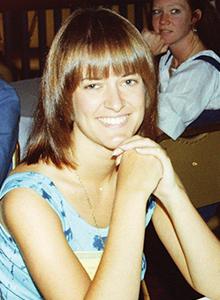
Wendy Pini
1951–
Wendy and Richard Pini created the much-loved fantasy series Elfquest, widely regarded as the first manga-influenced graphic novel series with a high fantasy theme published in the U.S. The Pinis were among the first independent publishers of their own comics, founding Warp Graphics in 1978. Richard ran Warp full-time from 1981 until 2003. In 2018, Elfquest concluded its 40-year run with Dark Horse Comics. The series has millions of readers around the world and continues to gain new fans. Wendy has also drawn and written comics for Marvel, DC, First Comics, and other publishers, including two graphic novels based on the 1980s TV series Beauty and the Beast. More recently, she created a graphic novel and animated webcomic based on the Edgar Allan Poe horror story “Masque of the Red Death,” which has been adapted into a musical.
Inducted 2019

Bob Powell
1916–1967
Bob Powell began his career at the Eisner-Iger studio in the late 1930s, doing stories for Jumbo Comics, Wonderworld Comics, Hit Comics, Smash Comics, and many other Golden Age series. His most famous series during his Eisner-Iger years was “Sheena.” When the Spirit newspaper comic book section started in 1940, Powell produced the “Mr. Mystic” backup feature. His later credits include work for such publishers as Street & Smith (Shadow Comics), Magazine Enterprises (Strong Man), Harvey Comics (Man in Black, Adventures in 3-D), and Marvel (Daredevil, Giant-Man, Hulk, and Human Torch).
Inducted 2025

Hugo Pratt
1927–1995
Hugo Pratt was an Italian who grew up in both Venice and Ethiopia. The aspiring cartoonist moved to Argentina in 1950, where he created a number of adventure comic strips. He returned to Italy in 1965, and in 1970 he created Corto Maltese, an adventure series set in the South Seas, for the French comics weekly Pif. This strip became very successful, and Pratt’s distinctive art style became highly influential on cartoonists around the world.
Inducted 2005
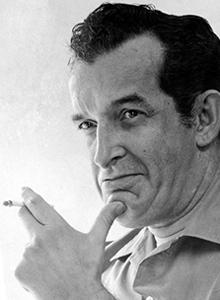
Antonio Prohías
1921–1998
Antonio Prohías is best known for his 30 years of work with MAD magazine on his comic feature “Spy Vs. Spy,” which has been adapted into a series of animated shorts, several video games, a series of live-action television commercials, and a Sunday strip. In the late 1940s Prohias began drawing cartoons for the prestigious Cuban newspaper El Mundo. His wordless material enjoyed international appeal, and by the late 1950s he was the president of the Association of Cuban Cartoonists. On May 1, 1960 (just three days before Castro gained control of El Mundo and the rest of Cuba’s free press) Prohías fled Cuba for New York City.
Inducted 2017